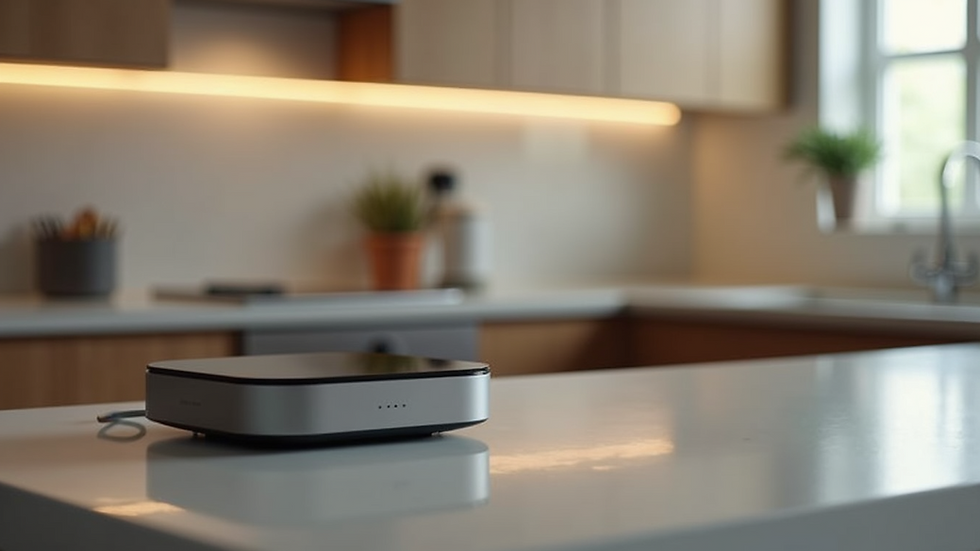Expert Troubleshooting for Your Home Devices
- Gene Carbonell
- 7 days ago
- 3 min read
In today's tech-driven world, home devices have become essential for our daily lives. From smart thermostats to Wi-Fi routers, these gadgets enhance our comfort, security, and connectivity. However, when they malfunction, it can be frustrating. Knowing how to troubleshoot common issues can save you time and money. This guide will provide expert tips to help you resolve problems with your home devices effectively.

Understanding Common Home Device Issues
Before diving into troubleshooting, it's essential to understand the types of issues you might encounter. Common problems include:
Connectivity Issues: Devices failing to connect to Wi-Fi or Bluetooth.
Power Problems: Devices not turning on or shutting down unexpectedly.
Software Glitches: Apps crashing or devices freezing.
Hardware Failures: Physical damage or malfunctioning components.
Identifying the type of issue is the first step toward finding a solution.
Troubleshooting Connectivity Issues
Wi-Fi Connectivity Problems
Wi-Fi issues are among the most common problems with smart devices. Here are steps to troubleshoot:
Check Your Internet Connection: Ensure your router is working. You can do this by connecting another device to the Wi-Fi.
Restart Your Device: Sometimes, simply restarting the device can resolve connectivity issues.
Forget and Reconnect: On your device, forget the Wi-Fi network and reconnect by entering the password again.
Update Firmware: Ensure your device's firmware is up to date. Manufacturers often release updates to fix bugs and improve performance.
Bluetooth Connectivity Problems
If your device isn't connecting via Bluetooth, try these steps:
Ensure Bluetooth is Enabled: Check that Bluetooth is turned on for both devices.
Remove Old Connections: Sometimes, devices can become confused with multiple connections. Remove old or unused connections.
Reset Bluetooth Settings: On some devices, resetting Bluetooth settings can help resolve issues.
Power Problems
Device Won't Turn On
If your device isn't powering up, consider the following:
Check the Power Source: Ensure the device is plugged in or charged. For battery-operated devices, replace the batteries if necessary.
Inspect Cables and Connections: Look for frayed cables or loose connections that might prevent power.
Perform a Hard Reset: For many devices, holding down the power button for an extended period can reset the device.
Device Shuts Down Unexpectedly
If your device shuts down unexpectedly, it may be due to:
Overheating: Ensure the device is in a well-ventilated area and not overheating.
Software Issues: Check for software updates that may address bugs causing shutdowns.
Battery Health: If the device is battery-operated, consider checking the battery health or replacing it.
Software Glitches
Apps Crashing or Freezing
If your apps are crashing or freezing, try these solutions:
Update the App: Ensure you are using the latest version of the app.
Clear Cache: On many devices, you can clear the app cache to resolve performance issues.
Reinstall the App: If the problem persists, uninstall and reinstall the app.
Device Freezing
If your device freezes, consider:
Restarting the Device: A simple restart can often resolve freezing issues.
Check for Updates: Ensure the device's operating system is up to date.
Factory Reset: As a last resort, performing a factory reset can resolve persistent issues, but remember to back up your data first.
Hardware Failures
Physical Damage
If you suspect physical damage, here’s what to do:
Inspect for Damage: Look for cracks, dents, or other visible signs of damage.
Check Warranty: If your device is under warranty, contact the manufacturer for repair or replacement options.
Seek Professional Help: If you're not comfortable repairing the device yourself, consider taking it to a professional.
Malfunctioning Components
If specific components are malfunctioning, such as a camera or microphone:
Test the Component: Use the device's built-in diagnostics (if available) to test the component.
Check Connections: Ensure all internal connections are secure if you are comfortable opening the device.
Replace Components: If a component is faulty, consider replacing it if possible.
Preventative Measures
To avoid future issues with your home devices, consider these preventative measures:
Regular Updates: Keep your devices updated with the latest software and firmware.
Routine Maintenance: Clean devices regularly and check for any signs of wear and tear.
Educate Yourself: Familiarize yourself with the user manual and troubleshooting tips specific to your devices.
Conclusion
Troubleshooting home devices can be daunting, but with the right knowledge and tools, you can resolve many issues on your own. By understanding common problems and following the steps outlined in this guide, you can save time and avoid unnecessary expenses. Remember to stay proactive with maintenance and updates to keep your devices running smoothly. If all else fails, don't hesitate to seek professional assistance. Your home devices are meant to enhance your life, so take the time to ensure they work effectively.



Comments